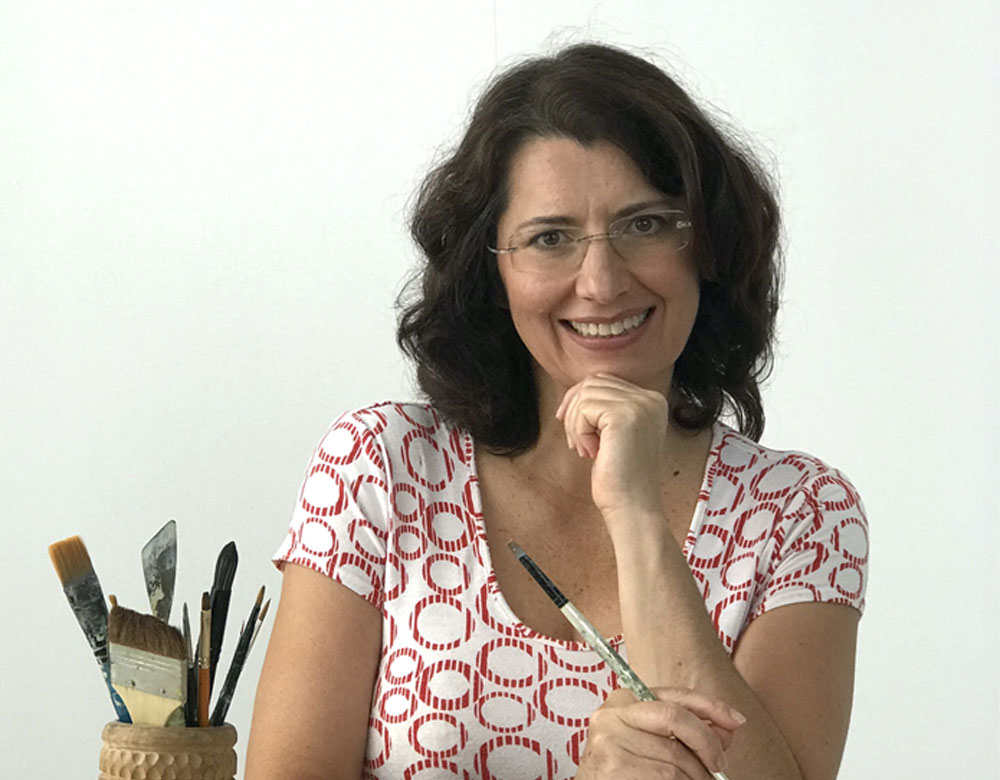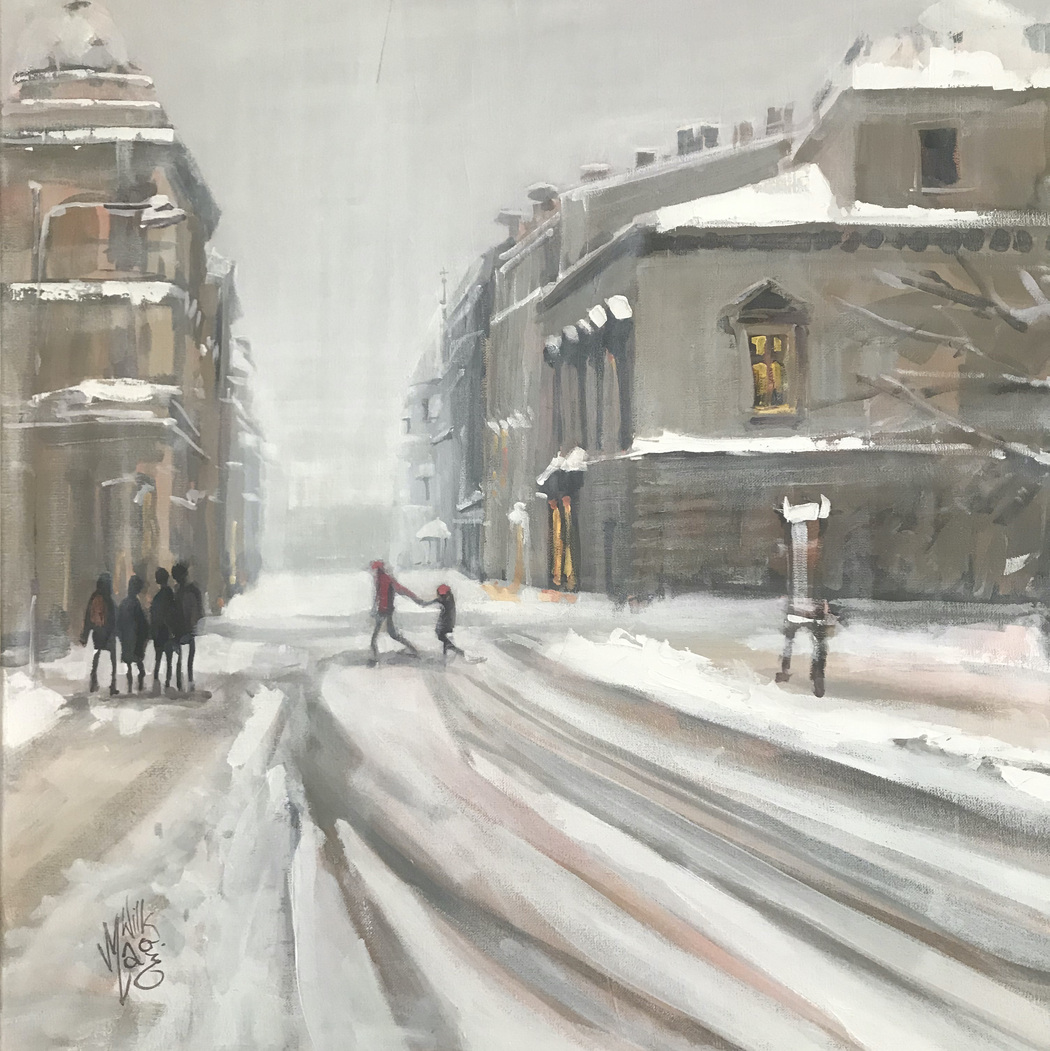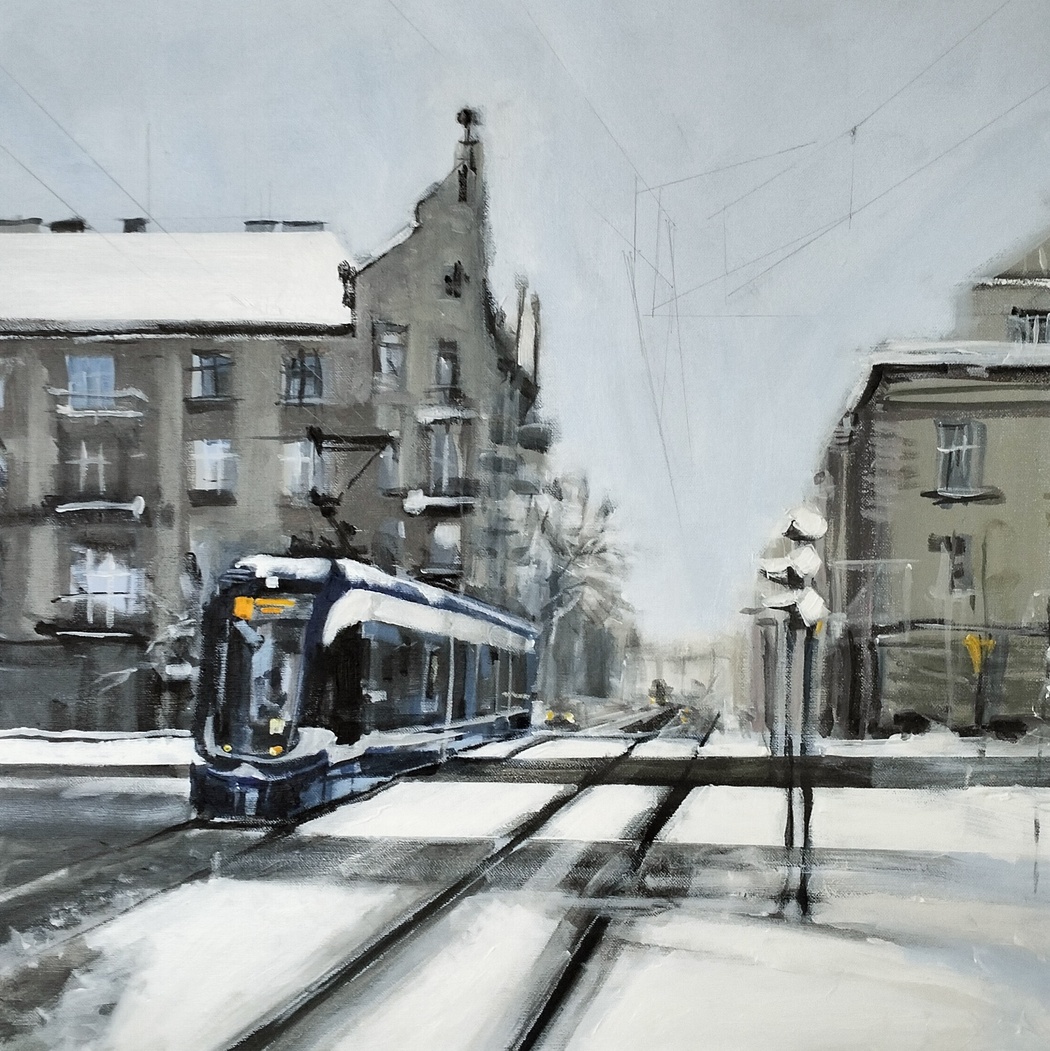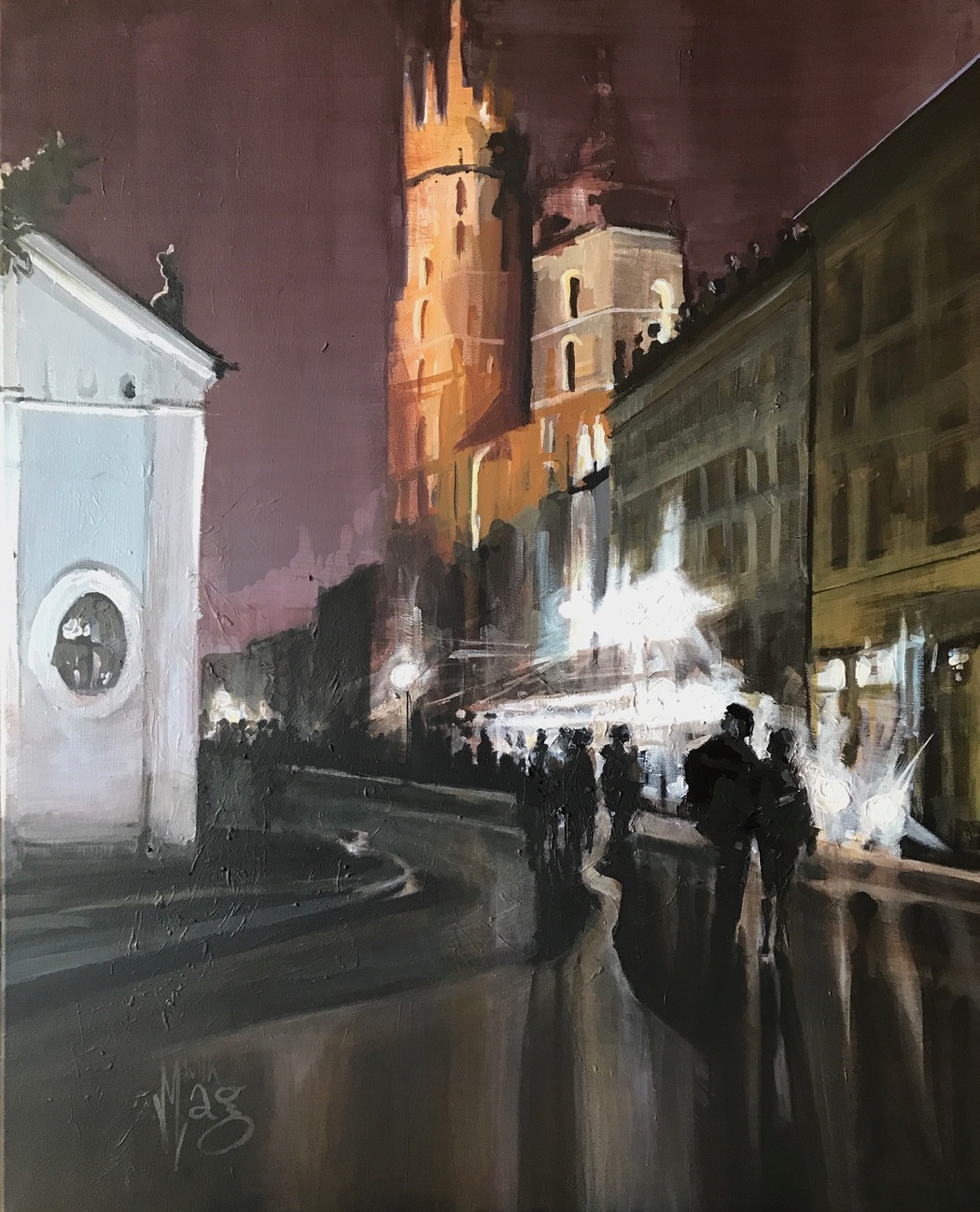Mag Wilk
Year of birth: 1975
Where do you live: Krakow, Poland
Your education: Master of Fine Arts from the Academy of Fine Arts in Krakow
Describe your art in three words: Ink, black & white
Your discipline: Drawing
Website | Instagram

Your work reflects a deep connection to the places you’ve visited and experienced. How do you choose which locations to paint, and how do they resonate with you personally?
That’s right—my painting is mostly about landscapes, whether it’s nature or city views that I’ve personally experienced. Most often, these are places close to home—paths I walk often, sometimes even daily. I really enjoy being a tourist in my own city. I look around a lot, and when something catches my eye, I take a photo—or a few. I usually stop for a moment to really look at it.
Later, at home, I go through the photos and think about which shot really deserves more attention. I play with the composition through sketching to see what works. I don’t paint places that don’t belong to me, so to speak. These days, the internet is full of beautiful photos—perfect shots, heavily edited, filtered, or even AI-generated. But those aren’t myplaces. I have no personal connection to them, and without that connection, I simply don’t feel the motivation to paint them.
 Mag Wilk | Dad with His Daughter | 2024
Mag Wilk | Dad with His Daughter | 2024
You mentioned that painting is a way for you to “pause, reflect, and preserve fleeting moments.” Could you elaborate on how you capture the essence of those moments in your landscapes?
Most of the places I paint are familiar to me—spots I visit often and at different times of day. I walk a lot, and I ride my bike too. Every morning I go for a walk in the same park, and I never get tired of it. I love watching the seasons change, but I also find comfort in seeing the same people at the same time every day. That gives me a sense of stability. It feels like life is flowing naturally—and yet, it’s always changing.
I start to notice the small shifts in my surroundings, and that gives me a feeling of control over my world. And when I paint a little piece of that world—something that happens to look especially beautiful in that moment—it’s like I’m pressing pause. I’m giving meaning to that fleeting moment. It makes me feel like I haven’t wasted time, or that time isn’t just slipping by. I show what I found beautiful. I highlight a tiny piece of reality. That gives me a sense of fulfillment.
As someone with a background in interior architecture, how has this influenced your approach to composition and technique in your paintings?
As an interior architect, I have theoretical knowledge not only of art history and architecture but also of construction and building techniques. I make sure the buildings in my paintings are with the right perspective. It’s in my blood now.
Your work has a unique balance of modern form and traditional landscape painting. How would you describe the evolution of your style over the years?
My artistic education is quite classical, and sometimes that feels like a burden. That’s why I often paint in square formats, which I find more modern. I dream of making my work more contemporary and less realistic. I hope that with time, as I keep painting, I’ll get there.
 Mag Wilk | Fast Tram | 2024
Mag Wilk | Fast Tram | 2024
You’ve participated in several prestigious exhibitions, including the Toronto Outdoor Art Festival and your solo exhibition in Kraków. How have these experiences shaped your artistic journey and public reception?
Participating in events where I could sell my work alongside other artists has been a very valuable experience. Pricing my paintings is an art in itself. There were times when I sold several pieces, and other times when I didn’t sell any. These experiences have taught me humility.
 Mag Wilk | Night Walk | 2019
Mag Wilk | Night Walk | 2019
You state that you don’t paint for the market and create out of pure passion. How do you stay true to your artistic voice while navigating the commercial aspects of the art world?
Given that making a living from painting is very difficult, I try to have an additional source of income. Some art dealers consider this inappropriate, believing that a serious artist should be full-time. I disagree. Because I don’t have to worry about every sale, I can paint exactly what I want—what resonates with me. And that is true creative freedom.
Could you tell us more about your creative process from the moment inspiration strikes to when you finish a painting?
As I mentioned before, my creative process starts with observing the world, walking, and exploring my surroundings—but in real life. I need to see, feel, observe, and be present in a place and space. When something catches my attention, I take a few or several photos. The next day, usually not immediately, as I like to gain some distance, I go through the photos to see if there are any shots that align with the images I’ve formed during my walks. Often, I already see the finished painting in my mind and paint it in my imagination. When it comes to the actual creative process, I’m essentially just transferring what’s in my head onto the canvas.
However, I try to remain open to what the creative process brings. What can be challenging is the moment when I have to accept that the painting is finished. There are times when I feel I’ve overdone it—when I’ve painted for too long, and the freshness is gone. The painting becomes overworked and exhausted. That’s something I want to focus on in my future work—learning to stop at the right moment.

Leave a Reply